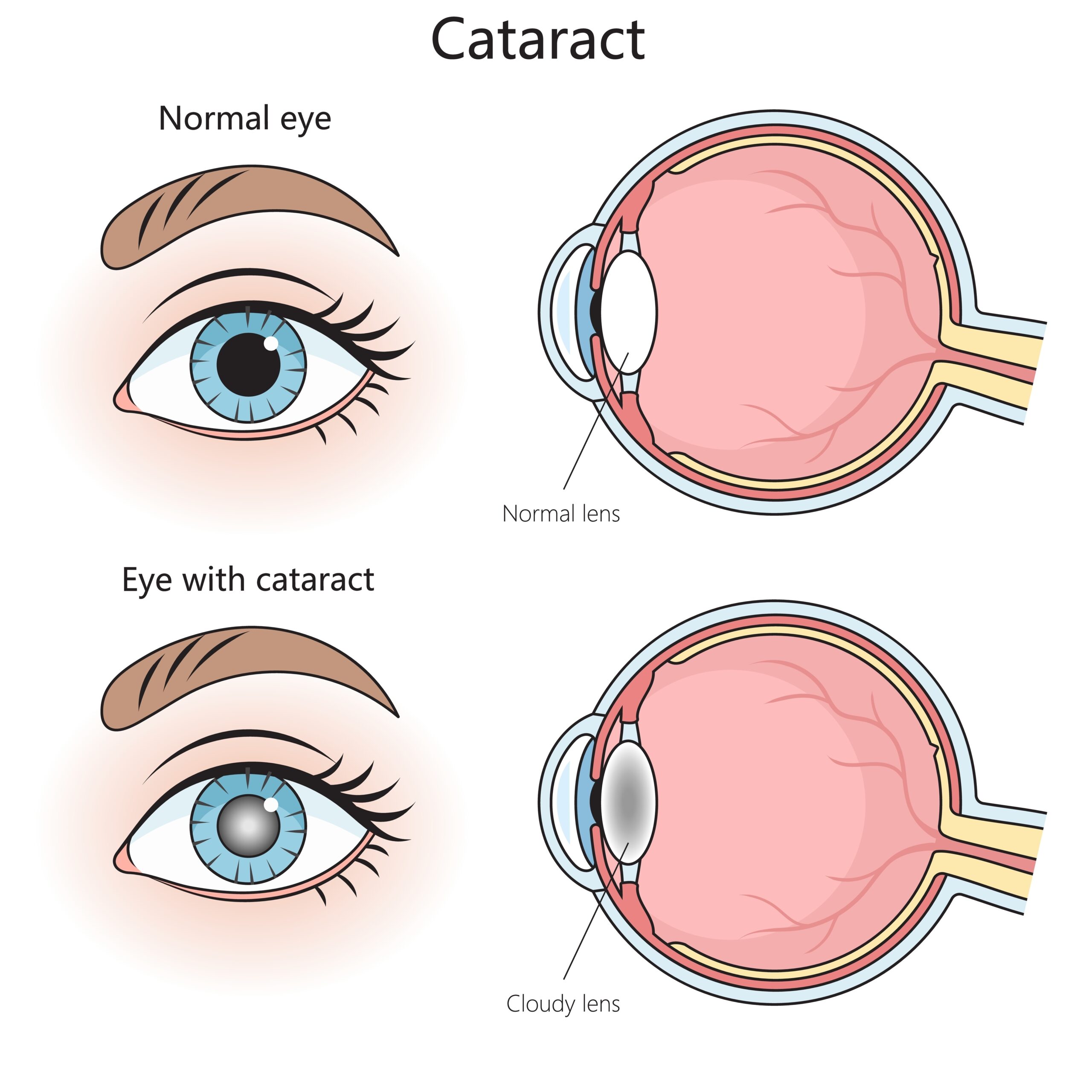One of the most common questions patients ask when considering cataract surgery is whether they’ll still need glasses afterward. The answer depends mainly on the type of intraocular lens (IOL) you choose during your procedure.
Understanding these options empowers you to make informed decisions about your vision correction goals. Keep reading to learn more about whether you will need glasses after cataract surgery and what IOL may be right for you.
How Does Cataract Surgery Work?

Cataract surgery works by removing your cataract-affected natural lens and replacing it with an intraocular lens (IOL). IOLs come in various types that correct different vision problems and offer different benefits.
Batra Vision Medical Group prioritizes helping patients achieve optimal vision without dependence on glasses, which is why they offer the most advanced lens replacement options available in the East Bay. Dr. V. Nicholas Batra, a leading expert in refractive cataract surgery, has helped thousands of patients achieve clearer vision through innovative lens technologies.
As one of the first providers in the Bay Area to perform laser-assisted cataract surgery with advanced systems like LenSx and ORA, Batra Vision Medical Group specializes in maximizing your visual potential beyond simple cataract removal.
What are My IOL Options?
At your preoperative consultation with Dr. Batra, you’ll have the opportunity to learn about all of your IOL options in detail. Depending on your lifestyle, medical history, and visual needs, you may benefit from one or more of these IOL choices:
Monofocal Lenses
Monofocal lenses are the traditional approach to cataract surgery and are typically covered by Medicare. These lenses correct vision at a single distance, but cannot address multiple focal points simultaneously.
With monofocal IOLs like the AcrySof IQ, Tecnis, or Staar NanoFLEX, patients may still require glasses for tasks at distances other than those for which the lens was optimized. If your monofocal lens is set for distance vision, you’ll require reading glasses for close-up work.
Conversely, if optimized for near vision, distance glasses become necessary for activities like driving. While monofocal lenses require continued glasses use, they provide excellent visual quality at their designated focal distance with minimal visual disturbances like halos or glare.
Multifocal Lenses
Multifocal IOLs offer vision correction at multiple distances through different lens zones with varying powers. Advanced options available at Batra Vision Medical Group include the AcrySof IQ ReStor and the TECNIS Symfony.
Patients with multifocal lenses experience significantly reduced dependence on glasses for most daily activities. These lenses provide good distance and intermediate vision, though some individuals may still prefer reading glasses for prolonged close-up tasks involving fine print.
The trade-off with multifocal technology involves potential visual disturbances such as halos around lights or slight contrast reduction, particularly in low-light conditions. However, most patients adapt well to these effects and find the freedom from glasses worthwhile.
Toric Lenses
For patients with astigmatism, toric IOLs like the Tecnis Toric or Staar C2 Aspheric Optic correct both cataracts and astigmatism simultaneously. These specialized lenses significantly improve distance vision quality for astigmatic patients.
While toric lenses provide excellent distance correction, patients typically still need reading glasses for close-up activities. Many advanced toric designs can be combined with multifocal technology, offering both astigmatism correction and an extended range of vision.
Trifocal Lenses

Trifocal IOLs, including the advanced PanOptix and PanOptix Toric lenses, provide clear vision at near, intermediate, and distance ranges, offering the highest likelihood of achieving independence from glasses. With trifocal technology, patients can perform activities like reading, computer work, and driving without glasses.
The intermediate vision zone is particularly beneficial for modern lifestyles involving digital device usage and desk work. Some patients may experience halos or starbursts in certain lighting conditions, but the comprehensive vision correction often outweighs these minor visual disturbances.
Extended Depth of Focus (EDOF) Lenses
Extended depth of focus lenses, such as the AcrySof IQ Vivity and Vivity Toric, utilize non-diffractive technology to stretch light instead of splitting it between multiple focal points, providing a broad range of vision correction while reducing the visual disturbances commonly associated with multifocal and trifocal lenses. The Vivity also features blue light and UV filtering to protect your eyes from digital eye strain and sun damage.
With EDOF lenses, you’ll enjoy excellent intermediate and distance vision with functional near vision, which may require you to wear glasses for certain up-close activities.
Accommodating Lenses
Unlike fixed-focus lenses, accommodating IOLs like the Crystalens by Bausch and Lomb actually move within the eye to change focus, mimicking the natural lens’s behavior. Most patients with accommodating lenses achieve excellent independence from glasses for the majority of daily activities.
Some may choose to wear glasses for extended reading sessions or detailed close work, but overall dependence on visual aids is minimal.
Light Adjustable Lens
RxSight’s Light Adjustable Lens offers unprecedented customization potential. This revolutionary technology allows Dr. Batra to fine-tune your vision after surgery through specialized light treatments performed in the office.
The Light Adjustable Lens provides the unique advantage of “test driving” different vision corrections before finalizing your lens power. This customization capability often results in optimal glasses independence tailored to your specific visual needs and lifestyle preferences.
The Refractive Surgery Council emphasizes the importance of your active participation during the adjustment process, as while your eye doctor will perform the light treatments, you’ll be the one in charge of your visual outcome. You should feel comfortable asking questions and communicating your experience throughout the process to arrive at your best possible vision.
Choosing the Best IOL for You
With so many options available, it can feel overwhelming to choose the right IOL for your lifestyle and vision goals. Here are some things to consider when making your choice:

Lifestyle
Your daily activities significantly influence the best lens choice for minimizing glasses dependence. Patients who spend considerable time reading or performing detailed close work may benefit more from multifocal or trifocal lenses.
Those prioritizing distance activities like driving or sports might find extended depth of focus (EDOF) or premium monofocal lenses more suitable.
Eye Health and Anatomy
Individual eye characteristics, including corneal shape, existing astigmatism, and overall eye health, affect lens performance and the need for glasses. Dr. Batra conducts comprehensive evaluations using advanced diagnostic technology to determine which lens options will provide optimal results for your specific anatomy.
Visual Expectations and Adaptation
Realistic expectations play a crucial role in post-surgical satisfaction. While premium IOLs significantly reduce dependence on glasses, some patients may still prefer glasses for specific tasks or in certain lighting conditions.
Understanding these nuances helps ensure satisfaction with your visual outcomes.
Are you ready to learn more about achieving visual independence after cataract surgery? Schedule a comprehensive cataract evaluation at Batra Vision Medical Group in San Leandro, CA, today!

 Follow Us!
Follow Us!